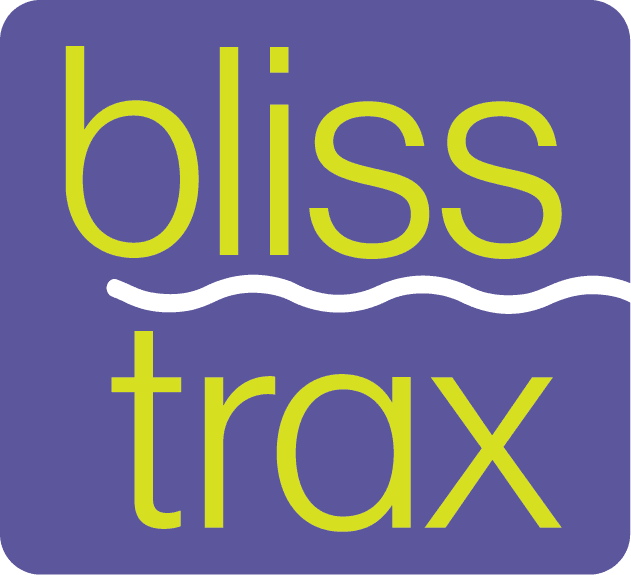Struggling to fall asleep or stay asleep? Binaural beats might be the answer you’re looking for. These soothing sound frequencies can help calm your mind and body, making it easier to drift off into a restful night’s sleep. Whether you’re dealing with stress or just looking to improve your sleep quality, incorporating binaural beats into your nighttime routine can make a difference. Check out BlissTrax™ to discover how sound can transform your rest and relaxation.
#1: What Are Binaural Beats?
Binaural beats are a type of soundwave therapy that uses specific frequencies to influence your brain activity. When you listen to two slightly different frequencies in each ear, your brain processes a third, combined beat, known as the binaural beat. This beat helps the brain reach certain states, such as relaxation, focus, or sleep, depending on the frequency range.
How Binaural Beats Work in the Brain
When you listen to binaural beats, your brain processes the difference between the two frequencies, creating a single tone. This difference can lead to various mental states. For example, if the left ear hears a 200 Hz tone and the right ear hears a 210 Hz tone, your brain interprets a 10 Hz beat. That 10 Hz beat can encourage a relaxed brainwave state, which is helpful for sleep or meditation. Different frequencies affect your brain in unique ways, stimulating patterns that can make falling asleep easier.
Types of Binaural Beats for Different Sleep Stages
There are several types of binaural beats, and they’re often categorized by their frequency range:
● Delta waves (0.5 to 4 Hz): These are the slowest waves and are linked to deep, restorative sleep. Listening to delta waves can help you fall into deep sleep and stay asleep longer.
● Theta waves (4 to 8 Hz): These frequencies are associated with light sleep and the stages between wakefulness and sleep. They’re ideal for helping you drift off into sleep.
● Alpha waves (8 to 13 Hz): Though more related to relaxation and meditation, alpha waves can be helpful for winding down before bed, calming your mind and body in preparation for sleep.
Each type of binaural beat corresponds to a different sleep stage, helping you achieve a more restful night’s sleep depending on your needs.
#2: Benefits of Using Binaural Beats for Sleep
Binaural beats can have a positive impact on your sleep routine, especially if you struggle with stress or sleep disorders. By using specific sound frequencies, binaural beats can help your mind relax and make it easier to fall asleep naturally.
Reducing Stress and Anxiety Before Bed
One of the key benefits of binaural beats is their ability to reduce stress and anxiety before bed. The calming frequencies, particularly in the theta and delta ranges, encourage your brain to shift into a more relaxed state. This is especially helpful if you tend to overthink or feel anxious when trying to sleep. When your mind is calmer, you’re less likely to stay awake worrying, and it becomes easier to drift off. Regularly listening to binaural beats can create a calming pre-sleep habit, which reduces tension and promotes relaxation.
Improving Sleep Quality and Duration
Binaural beats don’t just help you fall asleep faster—they can also improve the overall quality and duration of your sleep. Delta waves, which are linked to deep sleep, encourage longer periods of restorative rest. This is the stage of sleep when your body repairs itself and your brain processes memories. By spending more time in deep sleep, you wake up feeling refreshed and energized. If you’re someone who wakes up frequently during the night, binaural beats can help you stay asleep longer, promoting a full night of rest.
#3: How to Use Binaural Beats Before Bed
Incorporating binaural beats into your bedtime routine can be simple and effective. The key is knowing when and how to use them to maximize relaxation and sleep quality.
Best Times to Listen to Binaural Beats for Sleep
Timing is important when using binaural beats for sleep. Ideally, you should start listening to them about 30 minutes before you plan to fall asleep. This gives your brain enough time to shift into a relaxed state. You can listen while you’re winding down with a bedtime routine, like reading or doing light stretching, to enhance the calming effect. Consistently using binaural beats at the same time each night can also help your brain associate the sound with sleep, making it easier to fall asleep over time.
Creating a Relaxing Sleep Environment with Sound
For binaural beats to work effectively, it’s essential to create a peaceful sleep environment. This means finding a quiet space where distractions are minimal. Using a good set of headphones or earbuds is important because binaural beats require different tones in each ear for your brain to process the sounds correctly. Dimming the lights, lowering the room temperature, and eliminating noise can further help your mind relax, making the binaural beats more effective at guiding you into a restful state.
#4: Choosing the Right Binaural Beats Playlist
Selecting the right binaural beats playlist can make a significant difference in your sleep quality. Understanding the key frequencies and how they affect your mind and body is the first step toward finding the perfect playlist for a restful night.
Key Frequencies for Deep Sleep
When it comes to deep sleep, certain frequencies are more effective than others. The delta range, between 0.5 to 4 Hz, is most commonly linked with deep, slow-wave sleep. Listening to binaural beats that fall within this frequency range can help you reach deeper stages of sleep more quickly and stay in them longer. Delta waves slow brain activity, promoting a restorative sleep state where your body can heal and your mind can process the day’s events. Choosing a playlist that features delta frequencies is essential if your goal is to improve deep sleep quality.
Finding Playlists That Match Your Sleep Goals
Different people have different sleep needs, and there are playlists that cater to various goals. If you’re looking to relax and calm your mind before sleep, playlists featuring alpha (8-13 Hz) and theta (4-8 Hz) frequencies may help ease you into sleep. On the other hand, if you need help staying asleep throughout the night or achieving deeper rest, look for playlists that focus on delta waves. Some apps, including BlissTrax™, offer curated playlists that combine multiple frequencies to enhance both relaxation and sleep quality, helping you meet your specific sleep goals.
#5: Tips for Maximizing Sleep with Binaural Beats
To get the most out of binaural beats for sleep, it’s important to approach it with a consistent routine and pair it with other relaxing practices. This will help train your brain to associate the sounds with rest, making your efforts more effective over time.
Consistency and Routine
Like any sleep aid, binaural beats work best when used consistently. Incorporating them into your nightly routine at the same time each day helps your brain form a habit. Set aside time every night—around 30 minutes before bed—so your body knows it’s time to relax and prepare for sleep. Over time, your brain will start associating binaural beats with rest, making it easier to wind down and fall asleep.
Pairing Binaural Beats with Meditation or Breathing Exercises
For a deeper relaxation experience, consider pairing binaural beats with meditation or breathing exercises. This combination can enhance the calming effect of the beats, helping you clear your mind and ease stress even more. Simple deep breathing exercises or mindfulness meditation while listening to binaural beats can help lower your heart rate, relax your muscles, and create the perfect conditions for sleep. The combination of calming sounds and mindful breathing can lead to a smoother, quicker transition into rest.
Final Words
If you’re ready to experience deeper, more restful sleep, try adding binaural beats to your nighttime routine. With the right playlist and a consistent habit, you can enjoy better sleep and wake up refreshed. For more ways to enhance your relaxation, visit BlissTrax™ today and discover how sound can transform your rest.


